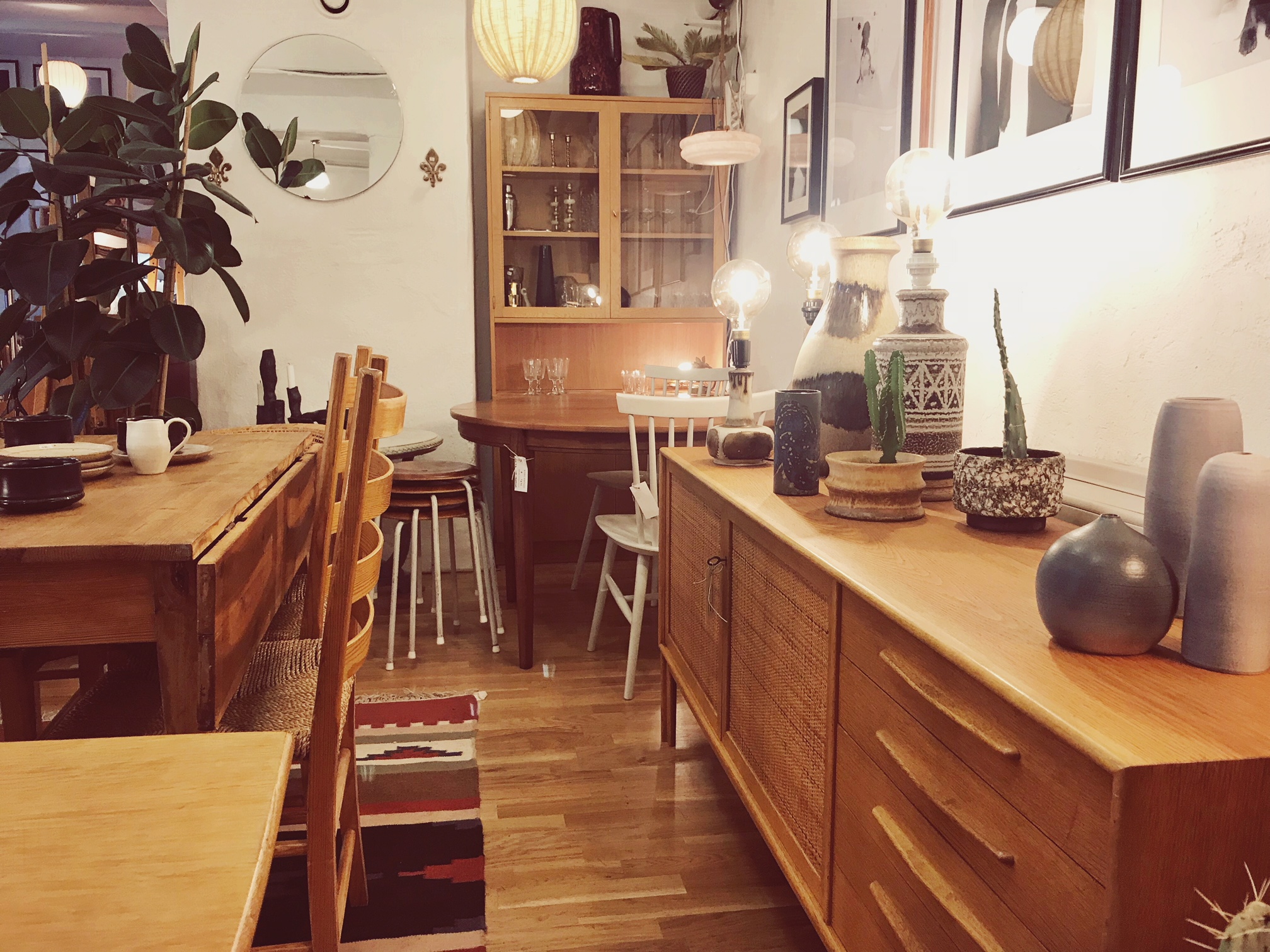The world of conscious consumption often talks about food and fashion, with concepts such as fast fashion getting more and more attention. But what does conscious consumption mean when it comes to our home? How can we be equally conscious of the items we surround ourselves with at home as we are with what we eat and wear?
A first step is to accept that the fast fashion concept can be found in the world of interior design too. There are new trends each season where brands / shops / magazines encourage us to buy new furniture, rugs, kitchenware, decorations each season. New trends, and, some might argue, the obsession with interior design / having a beautiful home that very clearly can be seen in countries like Sweden, also reaches new levels where we kit out fully functioning kitchens and bathrooms. They might look to old-fashioned, or perhaps they don’t have the right details based on current trends (like brass or marble for example), or maybe a new buyer of a house or flat wants to ‘make it their own’. Too often this even happens when a new buyer doesn’t like the newly renovated kitchen that was put in before the previous owner put it on the market, which means two, probably fully functioning kitchen sets are being thrown out. So, what can be done instead of letting yourself get too caught up in trends and consumption crazes?
Well, in a a similar fashion to when it comes to a sustainable wardrobe where we try to buy time-less style that lasts, we should do the same for our homes. We don’t necessarily have to completely ignore or resist interior design trends, but there are things we can consider to still make conscious decisions.
Sticking to a colour scheme based on colours we like is a good place to start. Colours that we know will last through time, rather than those that potentially can be seen as current trends. These long-lasting colours can be used as the basis of your home decor, and you can instead add accents of colour to mix things up depending on season or new trends you like.
Spend time thinking what you actually need for your home. What rooms are already crowded? What are you missing? Thinking a bit extra before buying helps you to not buy unnecessary things that won’t find a home. The interior trends want us to buy new things more often but we need to be conscious of what is actually even achievable – not everyone can, or should, buy a new sofa every season depending on the latest colour / material / style trend. It’s also worth considering for any trend, whether it’s one that is likely to last or whether it’s just that, a short-lived trend that it won’t be worth investing in.
Ask questions and read labels. Through the Fashion Revolution campaign we’ve started asking who made our clothes, but we should be asking the same when it comes to our homeware. Who made them, and where were they made? What materials have been used in the process and have they been made to last through trends and times? Aim to buy things for which you are happy with the answers to these questions. Fairly made products, created using environmentally friendly materials and processes with key words being fairtrade, handmade, craftsmanship, organic, wood, and locally sourced. There is an increased consumer interest for these things but ultimately we need to find the places where we can buy products that fit the bill. So it’s great to see initiatives like Aerende, a online shop selling conscious homeware created by people facing social challenges.
DIY. Instead of always opting for buying new things, can you do some DIY to fix or upcycle something you’ve already got? Instead of buying a brand new chest of drawers, maybe just add some new paint and handles to the one you’ve got or one you know sits in your mum’s attic And maybe use that old linen tablecloth that is a bit torn and spotty to cut out the best bits and create pillow cases for your sofa cushions. Creating new things to match new trends, by using old things that are no longer in trend is a great way to stay trendy whilst not having to buy anything new.

Buy second hand. As all trends always come back around, second hand shops are usually perfect for finding anything and everything, at a reduced price to buying new, and by buying second hand, you are also doing your bit for our planet as no new products had to be produced in the process. Online sites like eBay are always full of perfectly functioning items that someone else doesn’t like but is right up your street. And vintage shops dedicated to specific genres like midcentury Scandinavian design for example, will have great quality pieces that will make your home look stylish whilst not the same as everyone else’s IKEA home. Most things in our new Stockholm flat has been bought in vintage shops around Stockholm with a couple of my favourites being Floras Retro and Swedish Nature Collaborations.
As a final word, I would say that stylish pieces of good quality will never go out of trend.


What a good little guide – I think a timeless collection is key. The pieces I’ve kept for years (and go against trends) are the ones that hold a story too, and feel as equally beautiful to me as they look.
Besma | Curiously Conscious
Thanks Besma, yes, agree, timeless is definitely a key word for sustainability as something that can last the test of time surely is the most sustainable option! And yes, it’s nice when it’s something that is a bit special to you, not just the same stuff every one else has got at home 🙂